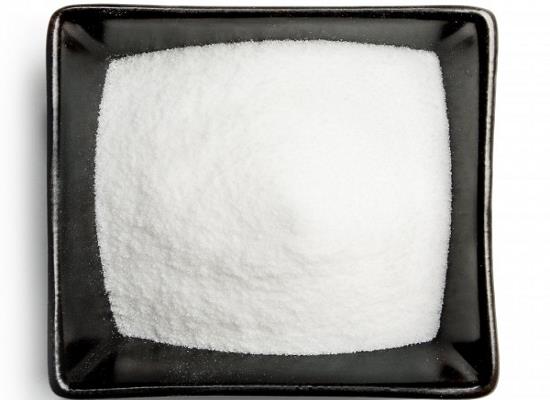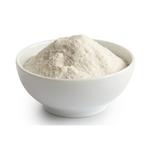L-Asparagine Monohydrate: Molecular Structure and Clinical Applications in Acute Lymphoblastic Leukemia
General Description
L-Asparagine monohydrate, a vital component in treating Acute Lymphoblastic Leukemia, targets amino acid metabolism crucial for cancer cell survival. By depleting essential asparagine, it inhibits lymphoblast proliferation, leading to cell death. Its integration in pediatric-inspired protocols has significantly improved survival rates for children and adolescents with ALL. Despite its efficacy, up to 30% of patients may develop hypersensitivity reactions, necessitating careful monitoring and potential use of alternative preparations. Precise therapeutic drug monitoring is crucial to optimize dosing and enhance treatment outcomes while minimizing adverse effects in managing ALL with L-asparagine monohydrate.

Figure 1. L-Asparagine monohydrate
Molecular Structure
L-Asparagine monohydrate, also known as (2S)-2-amino-3-carbamoylpropanoic acid monohydrate, is a crystalline solid with the molecular formula C4H8N2O3·H2O. At room temperature, it exists as colorless to white needle-like crystals. This compound is the hydrated form of L-asparagine, an α-amino acid that is one of the building blocks of proteins. The molecule comprises an α-amino group, a carboxyl group, and a side chain containing an amide functional group. It is classified as a polar, neutral amino acid due to the presence of both acidic and basic functional groups. The monohydrate form indicates the presence of one water molecule per molecule of L-asparagine. This hydration can influence its physical and chemical properties, including solubility and stability. L-Asparagine monohydrate exhibits unique characteristics owing to its molecular structure. It is soluble in water and sparingly soluble in ethanol, methanol, and other organic solvents. The solubility in water facilitates its use in various biological and pharmaceutical applications. Furthermore, it is stable under normal conditions but may degrade upon exposure to extreme heat or acidic/alkaline conditions. 1
Clinical Applications in Acute Lymphoblastic Leukemia
L-Asparagine monohydrate plays a crucial role in the clinical management of Acute Lymphoblastic Leukemia (ALL), especially highlighting its application in pediatric and adolescent patients. ALL, a severe hematologic malignancy, shows a high incidence among children aged between 2 and 10 years. The introduction of L-asparaginase, which includes forms such as L-asparagine monohydrate, into treatment protocols since the 1960s has significantly improved survival rates. The treatment with L-asparagine monohydrate targets the amino acid metabolism essential for cancer cell growth and survival. This compound works by depleting asparagine, a critical amino acid necessary for the rapid proliferation of lymphoblasts, the cancerous cells involved in ALL. By enzymatically breaking down asparagine, L-asparagine monohydrate starves these cells, inhibiting their ability to synthesize proteins effectively, leading to cell death. One of the significant benefits of using L-asparagine monohydrate in ALL treatment is its ability to be integrated into pediatric-inspired protocols, which have been particularly effective not only in younger children but also in adolescents and young adults (AYA) aged 15 to 39 years. Historically, AYA patients have had poorer outcomes compared to younger children, but the inclusion of higher doses of asparaginase, such as L-asparagine monohydrate, has been associated with greatly improved survival rates. Despite its efficacy, the use of L-asparagine monohydrate is not without challenges. Up to 30% of patients may develop hypersensitivity reactions, particularly with forms derived from Escherichia coli. In such cases, alternative preparations from different sources like Erwinia chrysanthemi, which does not cross-react immunologically with E. coli-derived asparaginases, are used. This switch can still maintain the therapeutic efficacy if managed correctly, ensuring that therapeutic levels of asparaginase activity are sustained through careful monitoring. The management of ALL with L-asparagine monohydrate requires precise therapeutic drug monitoring to ensure optimal dosing, maximizing treatment efficacy while minimizing potential adverse effects. Such monitoring helps tailor treatments to individual patient needs, enhancing outcomes and quality of life for patients with this challenging disease. In conclusion, L-asparagine monohydrate is a cornerstone in the treatment arsenal against ALL, particularly effective in pediatric and AYA patient protocols. Its mechanism of action and the need for careful management of potential hypersensitivity reactions underline the complexity and the tailored approach needed in modern oncology. 2
Reference
1. l-Asparagine monohydrate. National Center for Biotechnology Information. 2024; PubChem Compound Summary for CID 170358.
2. Egler RA, Ahuja SP, Matloub Y. L-asparaginase in the treatment of patients with acute lymphoblastic leukemia. J Pharmacol Pharmacother. 2016 Apr-Jun; 7(2): 62-71.
See also
Lastest Price from L(+)-Asparagine monohydrate manufacturers

US $0.00/Kg/Drum2025-04-21
- CAS:
- 5794-13-8
- Min. Order:
- 1KG
- Purity:
- 98%min
- Supply Ability:
- 500kgs

US $30.00/kg2025-04-21
- CAS:
- 5794-13-8
- Min. Order:
- 1kg
- Purity:
- 0.99
- Supply Ability:
- 100 tons


